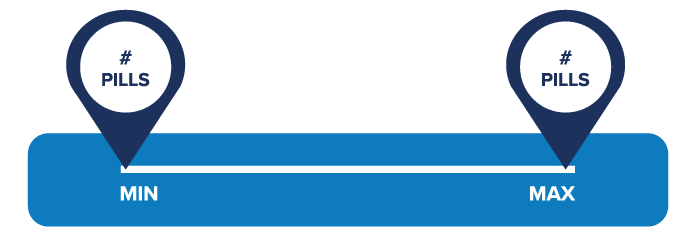Thoracic Surgery
Download PDF
OPEN’s Opioid Prescribing Recommendations are designed to spark meaningful conversations between patients and providers, so every pain management plan is tailored to the individual. These recommendations are rooted in research, patient-reported outcomes, and expert consensus. They are intended for patients who haven’t used opioids before surgery. Explore OPEN’s evidence-based recommendations for safer prescribing after thoracic surgery below.
Learn more at michigan-open.org/prescribing-recommendations/.
Lung Cancer Resection - Minimally Invasive
0-15
SUPPORTING LITERATURE
Mondoñedo et al. 2023 (Level 3 evidence)
- DOI: https://dx.doi.org/10.21037/jtd-22-1621
- Patient-reported outcomes data collected at 30-day clinic follow-up appointment after lung cancer resection (n=204 total survey respondents, n=171 minimally invasive operations).
- Post-operative LOS = 3.7±2.8 days.
- Patient-reported opioid use significantly less than pills prescribed at discharge (8.2±13.0 vs. 20.5±13.1 pills).
- No opioid use after discharge reported by 43.7% of patients.
- Lower post-discharge opioid prescription recommended for patients requiring zero opioids the day prior to discharge (prescribe 0 – 5 pills).
Lung Cancer Resection - Open
0-20
SUPPORTING LITERATURE
Mondoñedo et al. 2023 (Level 3 evidence)
- DOI: https://dx.doi.org/10.21037/jtd-22-1621
- Patient-reported outcomes data collected at 30-day clinic follow-up appointment after lung cancer resection (n=204 total survey respondents, n=20 open thoracotomy).
- Post-operative LOS = 3.7±2.8 days.
- Patient-reported opioid use significantly less than pills prescribed at discharge (8.2±13.0 vs. 20.5±13.1 pills).
- Higher proportion of open thoracotomy patients used 11 to 20 pills.
- Lower post-discharge opioid prescription recommended for patients requiring zero opioids the day prior to discharge (prescribe 0 – 5 pills).
OPIOID PRESCRIBING
When an opioid is needed after surgery, use the OPEN prescribing recommendations as the foundation for a shared decision-making conversation with the patient to determine the best prescription size.
It’s important to note that these are not rigid rules that must be adhered to, but rather recommendations. Starting form a standardized approach and then allowing for individualization helps promote both equity and patient-centeredness.
- Determine the opioid prescribing range based on:
- Type of procedure
- Additional procedures performed
- With the patient, determine the best prescription size within the appropriate range
- Assess for individual risk factors
- Consider patient preferences and other non-opioid strategies utilized
- Pain management at the time of discharge:
- Pain scores in 24 hours prior to discharge
- Medication use in 24 hours prior to discharge
- Timing of discharge

